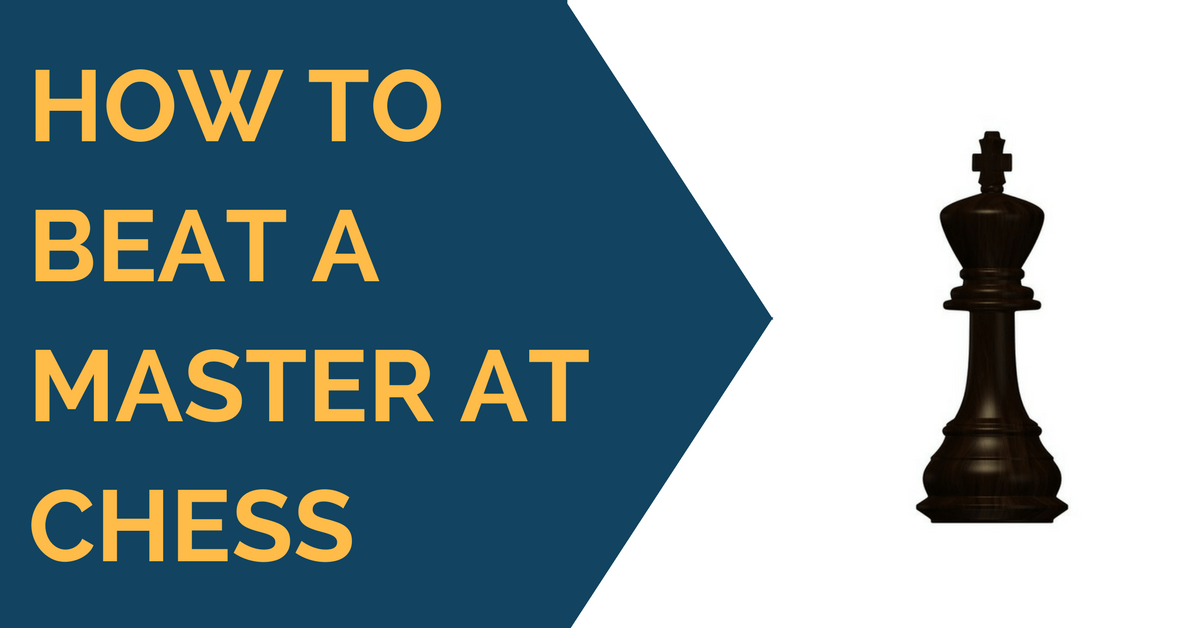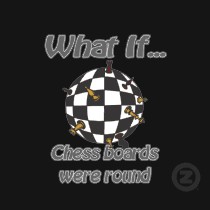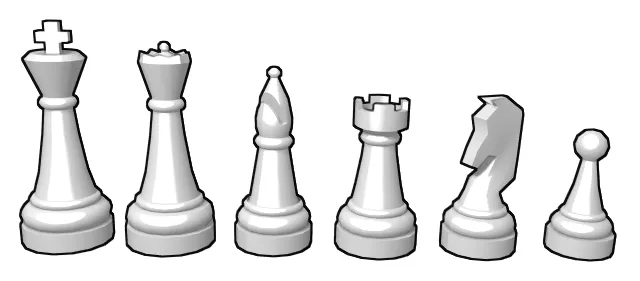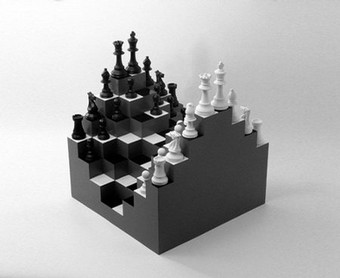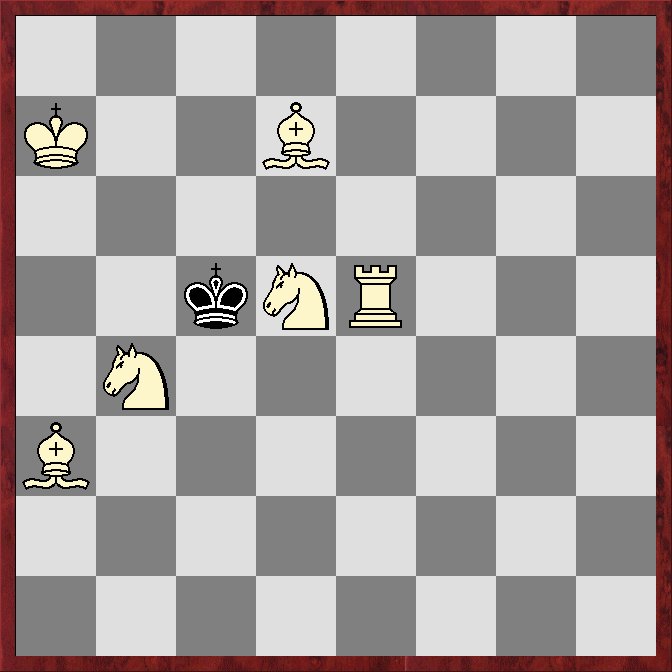Latest Posts - Page 142
I have written many articles on the topics of improvement at chess, becoming a better chess player and beating a stronger opponent at chess. Throughout that time I was getting mostly positive responses from the readers. Some agreed with the ideas I presented, some were pretty skeptical at first but then tend to share my thoughts, some completely disagreed (not many, but I cannot completely ignore this category as well).
Regardless of the category you belong to, you may ask does the methods and ideas recommended throughout this website work at all? Am I going to become a stronger chess player if I follow your guidelines? And you’re right, you should be critical and question the information you’re being exposed to.
In today’s article I will show and analyze one of my recent “officially rated” chess games that I played against a National Master (FIDE ~ 2250) and managed to win it using techniques I advocate.
Chess is a very complex game. Playing high quality moves is a very difficult task to achieve and the ability to pick the best moves is art, which requires many hours to master. Have you ever find yourself in a position, while playing a game of chess, when it seems like you don’t know at all what move should you make on the board. You think, well should I make this move or that move and you feel lost in the position and totally don’t know what to play? If you do you should feel happy for two reasons. First of all, you’re not alone, many novice players don’t know what to play (yes this article aims mostly novice chess players, since when Masters don’t know what move to make it a completely different story, but even they can learn something here). The second reason you should feel happy, because you were fortunate enough to stumble upon this article which will solve the issue (hopefully).
You probably know what chess is. If you do, you most likely know how chess pieces move and which pieces are worth what.
However, what you may not know is why they are worth that much and how to efficiently use them to win more games. You may not know these simple facts and ideas that are applicable to chess pieces. Intrigued? Read on…
Have you ever noticed that it is easy to play against some chess players and it’s is almost impossible to beat the other ones. You may say, of course some players are weaker and thus easier to play against, some players are stronger and thus harder to play against. But did you ask yourself a question why is this player considered strong while the other one is weak. Is that because he has openings encyclopedia build into his head, Nalimov’s endgames tables let him play perfect endgame or he can calculate zillions moves ahead? Not necessarily. All chess players want to become this sort of hard-to-deal with chess machines. But how can you do that? Is it necessary to memorize thousands opening lines and theoretical endgames?
Tactics is something that can make you an overall better player. That’s why I recommend practicing tactics problems on daily basis. Tactical blunder is the factor that very often decides the game. It does not matter how weak or strong chess player you are, solving tactics problems is something that can keep your skills sharp and win games.
There are many places on the internet where you can solve tactics problems. One of the high quality resources that can help with your daily tactical needs is the Chess-Problems.org.
Oddly enough, many non-chess players (and even beginner players) believe that ability to play chess well is something inherent. They believe that no matter what they do, they will not be able to progress.
It’s absolutely false. Of course, genetics plays some sort of role in becoming a good chess player, but if you’re not aiming at becoming a grandmaster and the chess world champion, it shouldn’t bother you at all. The truth is this: an average person who trains and plays chess consistently will beat any chess gifted genius who doesn’t practice playing. You’re surprised? You ask me how to improve your chess? The answer is pretty simple and complex at the same time.
There are 468 million people that are using Android powered smart-phones in the World in 2011. There is a high chance that many of these millions are occasional chess players, since chess is the most popular over the board game. Laptop may not be always accessible, but what if you want to play chess anyway? If you have an Android capable phone, playing chess on it is not a problem. What android chess program should you choose to spice up your day? If you are curious, read on. I’m certain this review will help you to decide: what is the chess software you really want for your Android phone.
Cover problem: I. Shel “De Maasbode”
1. Rf2! – 2.Qxg2#
1…Qxg6 2. 0-0-0#!
1…Qg4 2.Kd2#,
1…Qg3(or g5) 2.Ke2#
#1 N. van Dick “E. W. W. Wedstrijd”. White to move and mate in 2.
1.Bd1! – 2.Re1, R1f3, R5f3, Re5#
1…Bg2 2.Re1#, 1…Bg2
2.Re1#, 1…Bxf1
2.R5f3#, 1…Bg4
2.Re5#, 1…Bxf5
2.R1f3#
#2 L. Cubbel “Special Collection”. White to move and mate in 2.
1.Qa7!
1…b5 2.Rd4#
1…Kb3 2.Rb5#
1…Kc4 2.Qa4#
#3 A. Gulyaev “Special Collection”. White to move and mate in 2.
1.Qf1!
1…Ke7 2.Bc5#
1…Ke5 2.Bg3#
1…Kxc6 2.Qa6#
#4 L. Cubbel “Special Collection”. White to move and mate in 2.
1.Qe3!
1…Ka4 (or Kb4)2.Qb3#
1…Kc4 2.Qxc5#
1…a4 2.Qxc5#
1…c4 2.Qe8#
#5 L. Cubbel “Special Collection”. White to move and mate in 2.
1…e6 2.f2#
1.Kd4! e5+2.fe#
1…Kd6 2.Qd8#
#6 K. Voityla “The Problemist”. White to move and mate in 2.
1. Bb5! Bxb5 2.Nb6#!
1…Kd4 2.Nc6#
1…Kd62.Nd3#
#7 V. Moikin “USSR Chess”. White to move and mate in 2.
1…Rf4 2.Qg2#
1. Qh8! – 2. Qh4#
1…Rxh8 2.Be5#
1…Kf4 2.Qe5#
1… Rf4 2.Qh3#
1…Rb8+ 2.Qxb8#
Here are they come, the week 3 tactical studies. You can find week 1 and week 2 studies and try to solve them in case you didn’t yet do it. If you have any difficulties finding solutions, I strongly recommend reviewing how to solve tactics problems guide. Most tactics problems presented here have various ways to reach the mate, depending on the way black respond on the white first move. Try to find all the moves possible to be played for black and all the possible checkmates for white.
It’s a good idea to use a piece of paper or a notebook to record the moves and lines leading to mate. Being well organized helps to solve tactics. I have been receiving multiple messages via facebook , if there is a mate in 3 in this problems. Yes, there may be a mate in 3, but the idea is to find mate in 2. Only then and only then the problem is considered to be solved. So, if you find a mate in 3 keep looking for mate in 2. Good luck!
I have started posting 2 move tactical studies, solving those is a very effective way to improve tactical vision and the overall chess intuition. Today’s writing I’ve decided to devote to explaining the ways and methods of approaching these chess studies (aka tactics problems). Not only these methods can be applied for solving chess compositions and tactics problems, but the following guidelines can also be applied during the actual game (complimenting how to analyze a chess game I wrote before).
Let’s say you have a chess position in front of you in the form of a diagram, a chess board, a computer screen, a notation (if you’re really advanced) or whatever else. Let’s imaging, your job is to find a forced mate in a specific number of moves. How do you approach this task? Do you take the most powerful piece available and start checking the opponent’s King? Maybe. But let me assure you that that is not the most efficient way of solving a chess problem.

